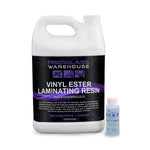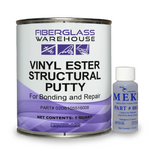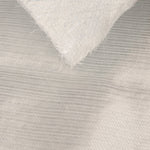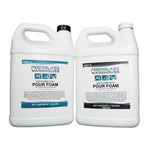You have no items in your shopping cart.
Epoxy 2:1 and 4:1 Laminating Resins are two-part, thermosetting polymers known for their exceptional adhesion, chemical resistance, and durability. Used for laminating with fiberglass or as an adhesive or coating, these resins provide a robust bond between composite materials. It creates lightweight parts that have low shrinkage, excellent flexural strength and provides protection from water, moisture, chemicals and abrasion.
Popular Uses
-Surfboard repair/ manufacturing
-Boat hulls
-High performance and light weight parts
-As an adhesive
-Composite parts
-Mixed with fillers to create a putty
Needed Supplies (this will vary depending on your project):
- Epoxy resin (Part A) and hardener (Part B). Essential components available in fast, medium and slow cure times
- Mixing containers: For combining the resin and hardener
- Brushes/rollers/spreader or squeegee : For applying the resin.
- Protective gloves, eyewear and mask: To safeguard against skin and eye contact as well as protecting against any fumes.
- Stir sticks or paint paddle: To ensure the mixture is evenly blended.
- Drop cloths or plastic sheets (optional): To protect your workspace
- Cleaning supplies- rags, acetone etc.: To prepare the surface before laminating and for clean up afterwards.
Preparation
-Work in a well-ventilated area. While epoxy resin does not give off as strong of fumes as polyester or vinyl ester resin, it does still require a well-ventilated area.
-Wear proper safety clothing including gloves and a face mask
-Make sure the resin, room and the surface you are working on are heated up to room temperature. The ideal temperature to work in is between 70-85 degrees.
-Make sure the surface is clean, dry and free from contaminates before getting started. The surface may need to be roughed up before applying resin.
Application
-Use a graduated mixing cup to measure the resin. Accurate measuring and mixing is imperative when working with epoxy resin. Follow the manufacturers instructions. Measuring will be different, depending on whether you are working with a 2:1, 4:1 or 5:1 epoxy laminating resin.
-Mix resin and hardener thoroughly, scraping down the cup as you go. We can’t stress enough how important it is to not only measure accurately but to mix well.
-Apply to surface
-Depending on your project, you can use brushes, fiberglass rollers, spreaders or squeegees to apply the resin.
-It is best to work in smaller batches
-Gel time will vary depending on which speed hardener was used as well as the room temperature
Pot life/gel time at 77°F
Fast: 12-18 minutes
Medium: 20-30 minutes
Slow: 45-60 minutes
-Continue adding layers if needed. You will need to sand between layers.
-Cure at room temperature. Again, cure times will vary depending on which speed hardener was used and the room temperature/ humidity.
Handling and Storage
Closed resin and hardener containers should be stored in a cool, dry place. It should be stored at temperatures below 75°F and away from heat sources, sunlight and flames.
Important Notes
-Epoxy Resin is not compatible with chopped strand mat
-Epoxy resin can bond to a surface where polyester resin was used but not vice versa. A polyester or vinyl ester resin or gel coat cannot bond well to epoxy resin.
-Table Top or Deep Pour Epoxy Resin is not typically used for laminating fiberglass or as an adhesive. Use laminating epoxy resins for these uses.
-For best results, work in a controlled environment where the temperature is fairly consistent. This will give you the best cure.
-Clean your brushes, tools and workspace immediately after use to ensure the epoxy will come off easily.
***Always try out a small test batch first. Working with resin is more of an art than a science***









